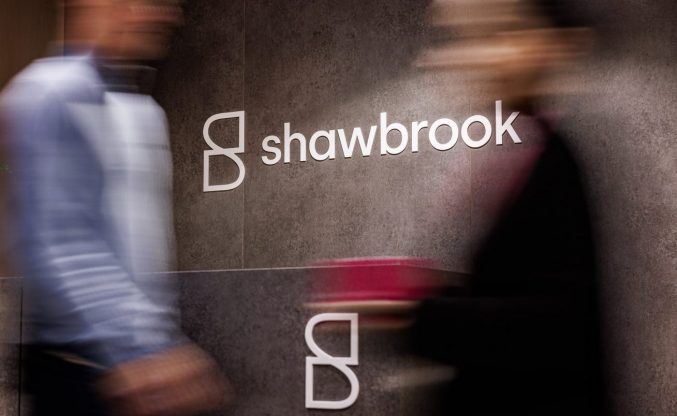Bridging sector buoyant through Q3 2017
By Bridging Loan Directory
The latest edition of West One Bridging Index shows gross annual bridging lending reached a new high of £4.7bn in September, eclipsing the pre-Brexit £4.4bn high
The UK’s bridging sector continued its healthy growth of 2017 with another strong quarter’s performance, yielding a new high of £4.7bn according to findings from West One’s Bridging Index. The latest edition of the quarterly report revealed that gross annualized lending increased from £4.3bn in June to exceed 2016’s pre-EU Referendum high of £4.4bn and be 10% above the same period in 2016.
The findings from this iteration of the Bridging Index provide further evidence that the bridging sector has recovered from the pronounced slump in the Q3 of 2016 that followed in the wake of the Referendum result. The robustness of that recovery is reflected in the Q3 2017 results for ASTL members, lending £851m in a quarter that included the traditionally-quieter summer holiday period, only slightly less than the record £874m in Q2.
Within this recovery, there do appear to be some changes to market dynamics however, with a higher volume of smaller-sized transactions characterizing recent months.
Marie Grundy, pictured, Sales Director of West One, said:
“2017 has proven to be a strong year for bridging finance, with a clear return to form after the post-Referendum turbulence this time last year. Seeing further robust new business performance in a quarter that includes the typically-quieter summer holiday period is very encouraging. The wider property and property finance markets have flattened against continued political uncertainty due to slow progress negotiating Brexit, and the prospect of interest base rate rises finally arriving. This new market high therefore reflects the underlying strength of bridging.
At West One, we’ve seen robust growth in our bridging this year, to reach around £450m of total lending and experiencing monthly lending records exceeding £60m. As we discussed in Q2, a major driver for that continued growth is demand from property professionals for smaller projects that are better suited to bridging funding than to full-blown development finance. We believe there is still that slack in the market and expect that the bridging market will continue to this pattern of solid growth, despite some slowing in the housing market. With pockets of growth outside London and the South East, we anticipate seeing more of that growth regionally.”
Trends in the bridging market
The emergent trend in the first half of 2017 of smaller transaction sizes has continued through the 3rd quarter. Average loan sizes dipped under £600,000 vs averages in excess of £900,000 at the same time last year, flattening-out the longer-run trend in the last 2 years that had previously seen significant growth. There have been fewer large transactions coming to market, reflecting the relatively depressed market for high-end properties with values over £1m, especially in London. However, there have been very healthy numbers of these smaller transactions, meaning total lending has held up well in Q3.
As performance figures from different sources point to more upbeat property markets in some regional hotspots such as the East Midlands or Greater Manchester, it looks like property investors are focusing on deals in those regions, with typically smaller ticket sizes.
The regional picture
Regional data give a mixed perspective. Between actual residential property and property finance data, and forward-looking expectations data, varying patterns emerge.
What’s clear is that London, in particular central London, is down for Q3. Both property price data from Nationwide and others, and forward-looking indicators such as those from RICS confirm this. The wider South East of England has also become more subdued in price growth, with a markedly negative outlook. Having said this, UK Finance regional mortgage data showed mortgage lending in the London region at +10% vs. Q3 2016.
Actual data for house prices identify both East and West Midlands as hotspots for annual price growth, alongside the South West, where supply is highly constrained. Interestingly the wider South East region is still showing growth, albeit at a slowing rate – as the below plot of Nationwide’s Q3 growth figures against average house prices show:
Savills research at a more granular level identified not only Midlands locations like Birmingham City, Leicester-Nottingham and Northampton, but also pockets in Scotland such as central Glasgow and the Galashiels area of Edinburgh commuter hinterland. With central Manchester also shining a light for the North West of England, this indicates the opportunities that investors are starting to exploit, where they know the local market.
Taking forward-looking sentiment data into account, other regions come to the fore, suggesting further scope for agile investors to grasp emerging opportunities. September’s RICS Residential Market Survey of members points to likely buoyancy in the North West, Scotland and above all Wales, with positive Q3 sentiment across a range of measures from price expectations to new enquiries and new listings. These data also point to continued positive market conditions in the East Midlands and South West.
Wider property market analysis
At the aggregate level, property data such as HMRC’s transaction figures showed a flat or declining Q3 for residential, suggesting a somewhat sluggish market. Non-residential property slipped more markedly after a period of relative positivity. The bridging sector therefore continues to perform well against that backdrop, with transactions being important to bridging where the exit route is property sale. Indeed, bridging redemptions have continued to remain positive, suggesting that the industry is also in a healthy state.
Bridging interest rates
Interest rates in Q3 recovered slightly from Q2’s low of 0.96%, returning to just above 1% per month. With Bank of England base rate changes widely expected for some months ahead of the 2nd November +0.25% announcement, it is likely that the market had already begun to factor this shift in.
A further rise in bridging rates during Q4 can therefore be expected, though the sector remains highly competitive. Well-funded players in the market will be able to maintain attractive rates for customers with special circumstances, who either need flexible loans or need funding with a quick turnaround, thereby maintaining the attractiveness of alternative lending, even if base rates rise.
Danny Waters, CEO of Enra Group, said:
“The bridging sector has performed well during Q3, despite the backdrop of concern around the progress of Brexit negotiations, and economic indicators pointing to both a slower economy and to the interest rate rise that ultimately came in November. Whatever happens next, the industry must continue to adapt to conditions, and provide the diverse and flexible funding options that property professionals need, so they can take advantage of the changing, regional landscape that we are seeing develop.”














You must be logged in to post a comment.